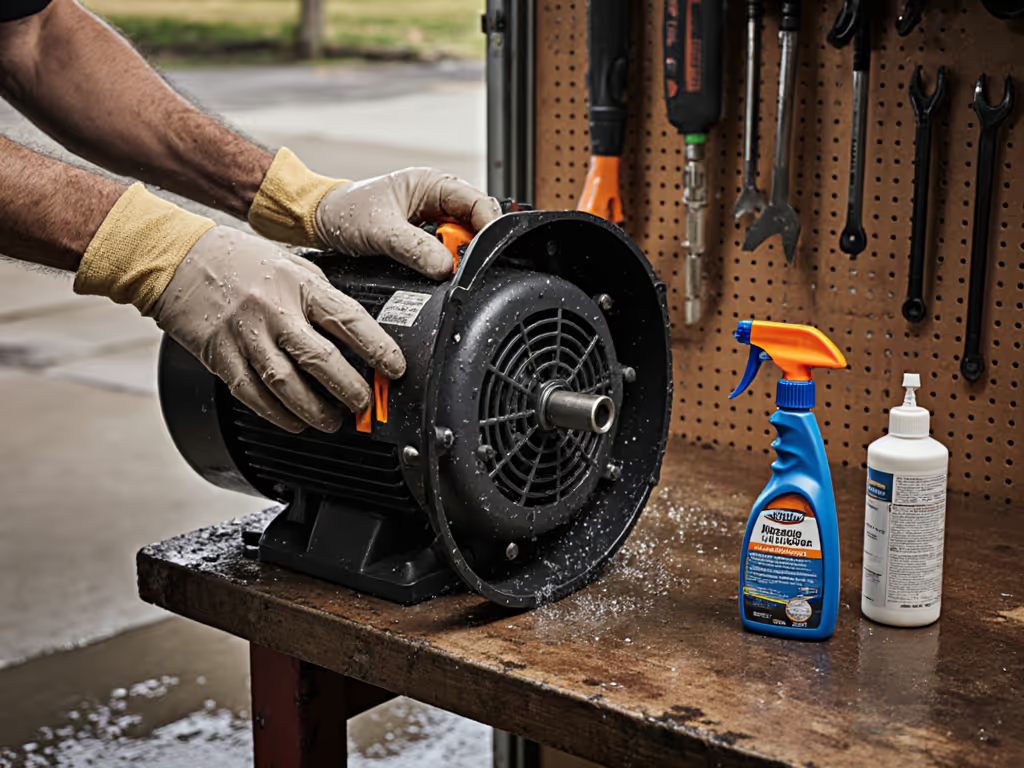
Stop Choosing Pressure Washers by PSI Alone: CU Rating Explained

When you're comparing pressure washing machines, fixating on PSI alone is like judging a car by horsepower alone. The real metric that matters? The CU rating explained as Cleaning Units (PSI multiplied by GPM). This single number cuts through marketing noise and reveals the true cleaning efficiency for your driveway, deck, or patio. Let's cut through the confusion with hard data, not hype. For a deeper dive into how PSI and GPM work together, see our PSI vs GPM guide.
Why PSI Is Misleading (And What Actually Matters)
Search online, and you'll drown in "5000 PSI" claims. But here's what manufacturers won't emphasize: PSI alone tells half the story. It's the stripping force, like a chisel prying grime loose. Without sufficient flow (GPM), that dirt just resettles. As one contractor told me: "I bought a 4000 PSI unit for my fence job. Took 4 hours. Switched to a 3000 PSI/3.0 GPM model? Same cleanup in 75 minutes. The rinse power was the game-changer."
Cleaning Units (CU) = PSI × GPM is the pressure washer performance comparison standard pros use. Two machines can share the same PSI but deliver wildly different results:
| PSI | GPM | CU | Real-World Impact |
|---|---|---|---|
| 3,000 | 2.0 | 6,000 | High pressure, low rinse flow, slow cleaning, streaking risk |
| 2,000 | 3.0 | 6,000 | Lower pressure, high rinse flow, faster results, less rework |
Here's the critical insight: A higher GPM at moderate PSI (like 2,500 PSI × 3.0 GPM = 7,500 CU) often outperforms a maxed-out PSI model. Why? You remove and rinse grime faster, reducing water waste and neighbor complaints. It's price-to-performance in action.
CU in Action: Solving Your Top Pain Points
Water & Time Savings
Most homeowners panic about drought restrictions or slow jobs. CU directly translates to gallons per minute effectively used. That 7,500 CU unit (2,500 PSI × 3.0 GPM) cleans 30% faster than a 6,000 CU model (3,000 PSI × 2.0 GPM) on concrete, using 18 fewer gallons for a 500 sq ft driveway. PSI-GPM calculation is not academic; it's your water budget. If you're under water restrictions, use our water conservation guide to plan gallons per job. My neighbor's switch to a flow-matched orifice (3.0 GPM tip) with a 2,800 PSI unit dropped his water use 22% while keeping cleaning time steady. How? Optimized rinse flow.

SIMPSON 3600 PSI 2.5 GPM Honda GX200 Pressure Washer
Noise Reduction (Without Sacrificing Power)
Gas units over 80 dB(A) at 25 ft trigger HOA fines, especially in Northeast suburbs. Compare dB levels and techniques in our quiet pressure washer rankings. But you don't need to trade quiet for power. A 9,000 CU machine (3,000 PSI × 3.0 GPM) at lower RPM can match the cleaning output of a screaming 4,000 PSI/2.0 GPM unit (8,000 CU) while running 5 to 7 dB quieter. Rubber isolators, fence-line baffles, and 40° tips (vs. aggressive 0°) cut noise further, proof that Quiet equals considerate. Brand tribalism won't save you here; engineered decibel control will.
Surface Safety Through Smart CU Selection
Fear of etching cedar or blowing mortar? CU vs PSI clarity is your armor. Soft surfaces like wood or stucco need moderate PSI (1,500 to 2,000) paired with sufficient GPM (2.2 to 2.5) for gentle yet effective cleaning. A 4,000 CU unit (2,000 PSI × 2.0 GPM) beats a 3,000 PSI/1.0 GPM (3,000 CU) model, because it lifts grime without blasting fibers. Pro tip: Always start with a 40° tip and a wider hose drag-minimizing surface cleaner. If results lag, then step down to 25°. Never assume "more PSI" = safer removal.
Your CU-Based Decision Framework
Don't guess your needs. Match CU to your top surfaces:
- Decks/Fences (Softwood): 2,500 to 4,000 CU (1,500 to 2,200 PSI × 1.8 to 2.2 GPM). Avoid PSI obsession, high flow prevents raised grain.
- Concrete/Pavers: 5,000 to 7,500 CU (2,500 to 3,000 PSI × 2.0 to 2.5 GPM). Prioritize GPM for fast rinse.
- Siding/Brick: 4,000 to 6,000 CU (2,000 to 2,800 PSI × 2.0 to 2.2 GPM). Balance stripping force and rinse flow.
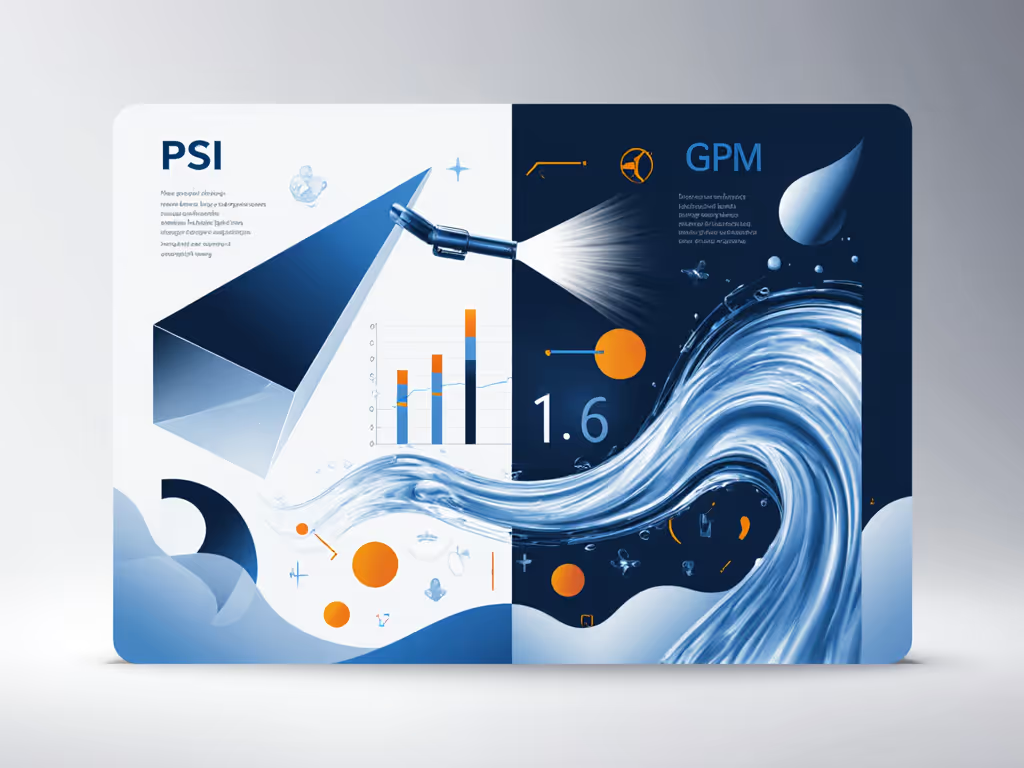
Actionable Next Step: Calculate Your CU Threshold
- Measure your largest surface (e.g., 600 sq ft driveway).
- Target cleaning speed: 50 sq ft/min = 12 mins total.
- Calculate required CU: (Surface area ÷ Target time) × 100 = Minimum CU.
Example: (600 ÷ 12) × 100 = 5,000 CU.
Now filter machines by this CU, not PSI alone. A SIMPSON ALH3425 (3,600 PSI × 2.5 GPM = 9,000 CU) dominates concrete but overpowers a cedar deck. For most homeowners, 4,000 to 6,000 CU hits the sweet spot, quiet, quick, and clean... spend once, use less water.
The Bottom Line
Choosing by PSI alone is like buying a sports car for grocery runs: wasteful and impractical. Your pressure washer performance comparison must start with CU. It's the compass for balancing water use, noise, and surface safety. Before your next wash, review our pressure washer safety guidelines to prevent costly mistakes. I've seen crews double their jobsite efficiency simply by flow-matching tips to their CU, not by chasing max PSI.
Do this today: Grab your current washer's specs, calculate its CU (PSI × GPM), and compare it to our surface guidelines. If it's mismatched, swap just the nozzle orifice, your pocketbook (and neighbors) will thank you. The best rig isn't the loudest or strongest. It's the one you'll use often without hassle.
Related Articles


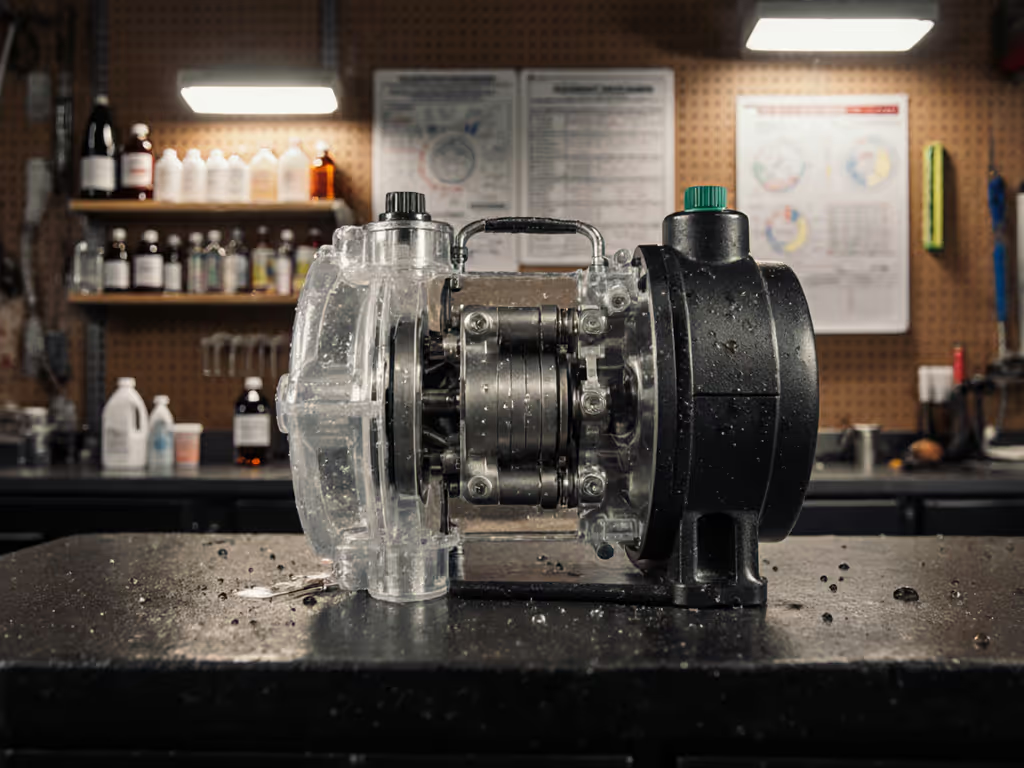
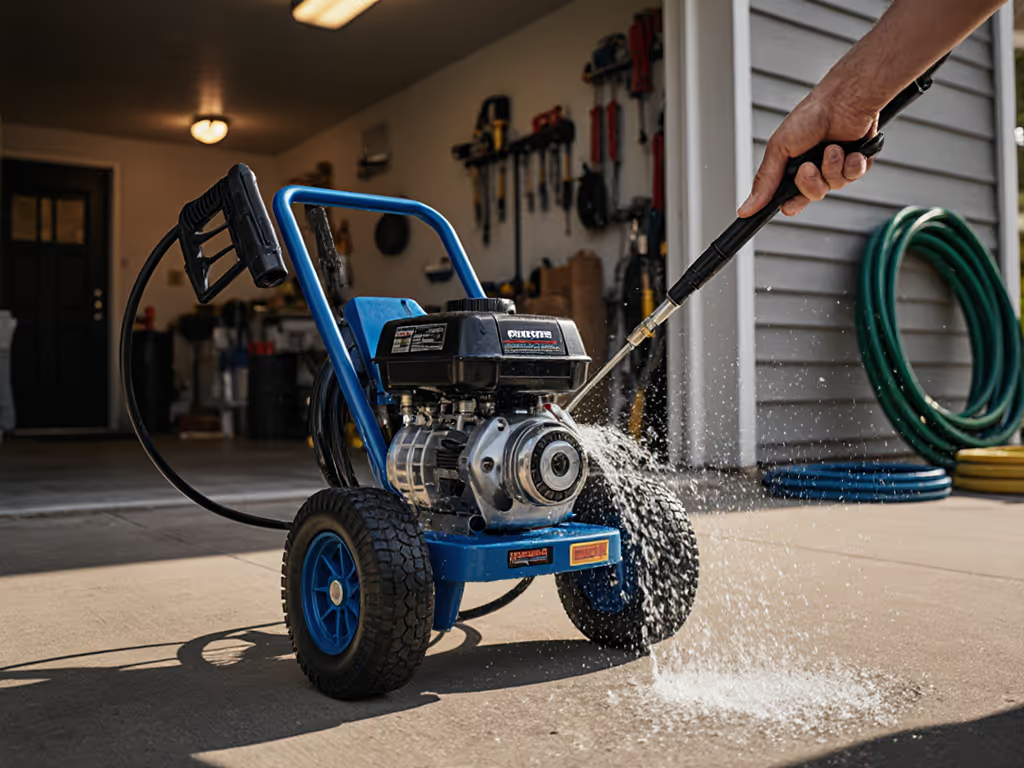
Pressure Washer Water Supply Issues Solved
Diagnose and fix the water supply - not just PSI - to stop surging, prevent surface damage, and protect your pump. Follow a quick flow test and setup checklist (filtration, hose size, leak checks, pressure staging) to clean safely and efficiently.
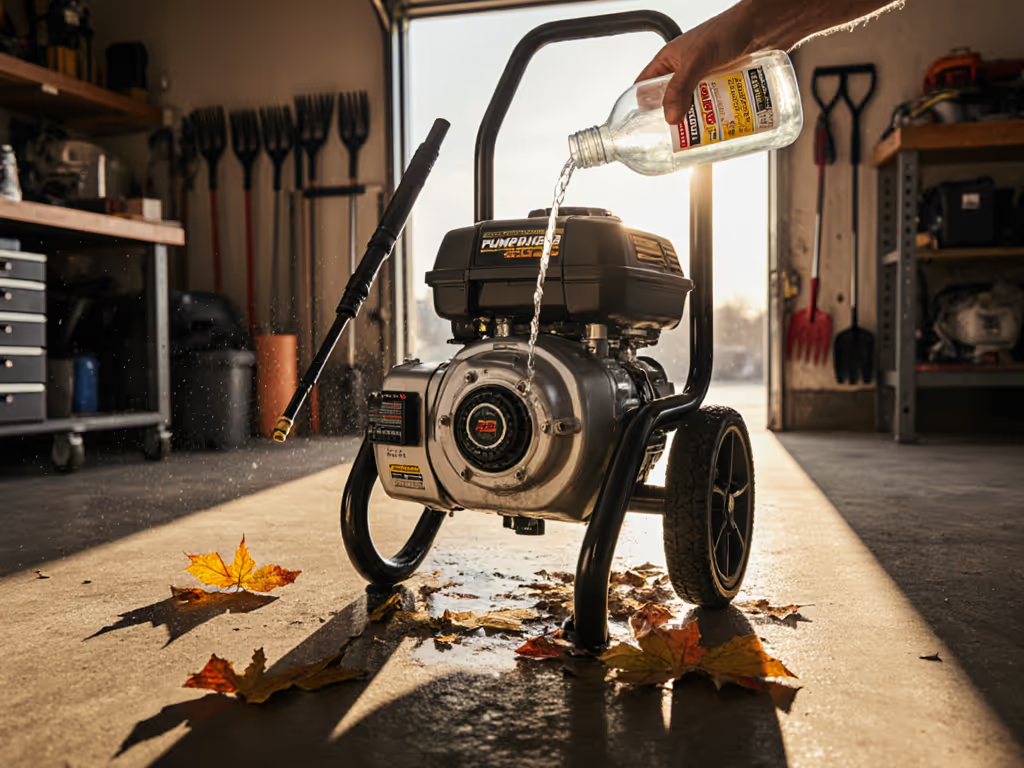
Winterize Pressure Washer: Safe Pump Preservation Guide
Protect pump internals and delicate finishes with a chemistry-first winterization process that uses pump saver, not automotive antifreeze, for reliable freeze and corrosion protection. Follow step-by-step procedures for gas and electric units, climate-specific ratios, and overlooked tips that prevent seal damage, oxidation streaks, and springtime tiger-striping.
